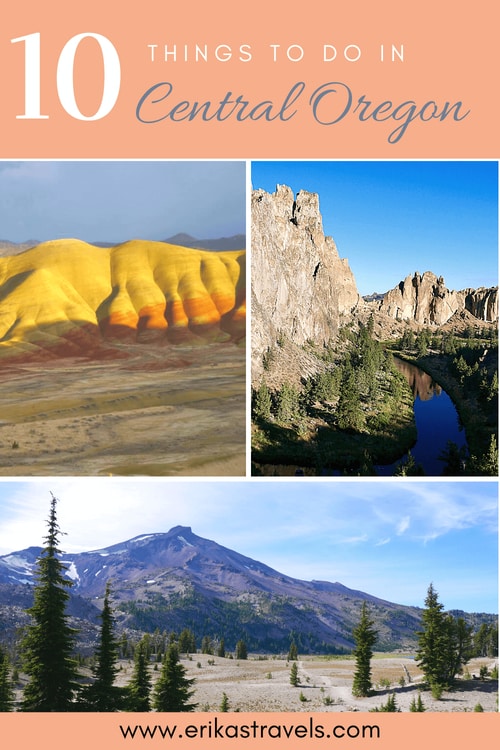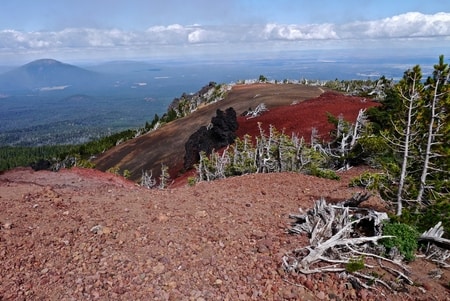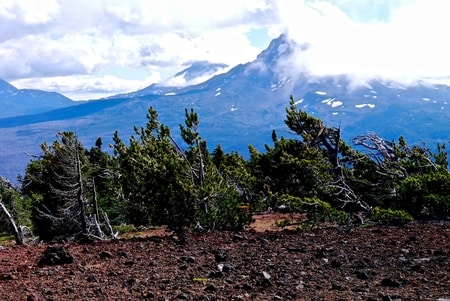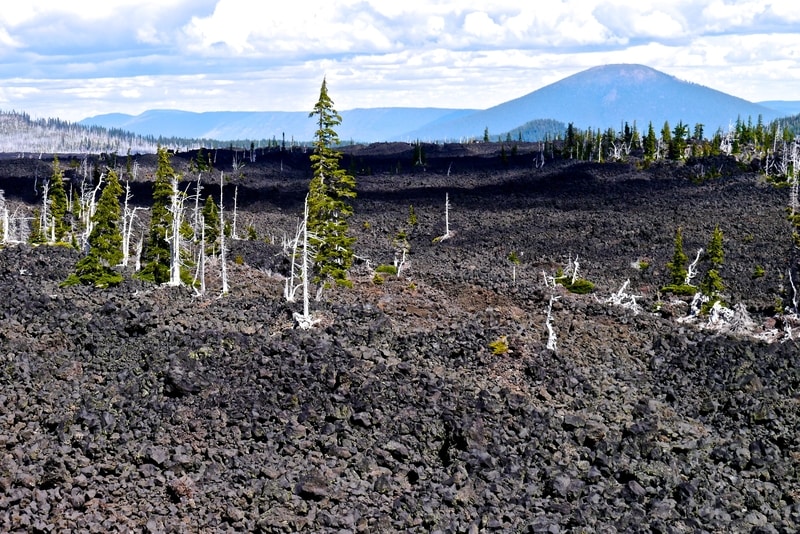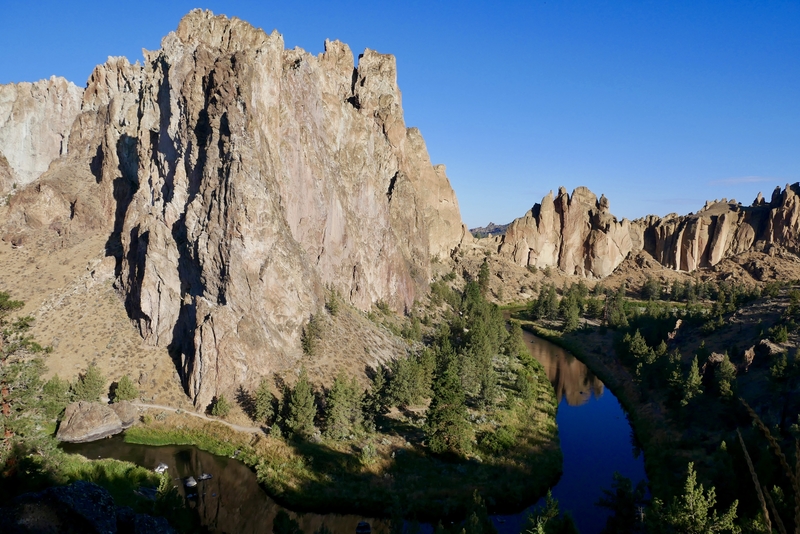
12 Incredible Things to Do in Central Oregon
Central Oregon is one of the United States’ most beguiling outdoor playgrounds. In recent years, the area has soared in popularity. It has become a mecca for nature enthusiasts and recreation lovers. The fact that there are countless things to do in Central Oregon is no longer a secret. And today, its deserts, volcanoes and ponderosa forests—once largely dismissed in favor of fertile lands to the west—-are beginning to draw adventurous tourists in droves.
Dan and I have always tried to go against the grain in our travels. We’ve often skipped popular tourist destinations in favor of lesser-known wonders. Instagram sensations and current travel fads do little to sway our decisions. But our approach to Central Oregon has been different. Despite the area’s recent boom, we’ve given in to its magnetism. We’ve been drawn to its deserts, its forests, its mountains, and its volcanic landscapes.
On numerous occasions, we’ve even contemplated making a permanent move to the area’s regional hub of Bend.
CENTRAL OREGON: THINGS TO SEE AND DO
Geographically, Central Oregon is blessed with a dizzying array of diverse landscapes. Aside from ocean—which lies three and a half hours to the west—it contains nearly everything an outdoor-lover could dream of.
Narrowing down an itinerary for a Central Oregon getaway can be intimidating. There are simply too many things to do and activities to choose from. The region contains countless swaths of protected land—including state parks, national forests, and two spectacular national monuments.
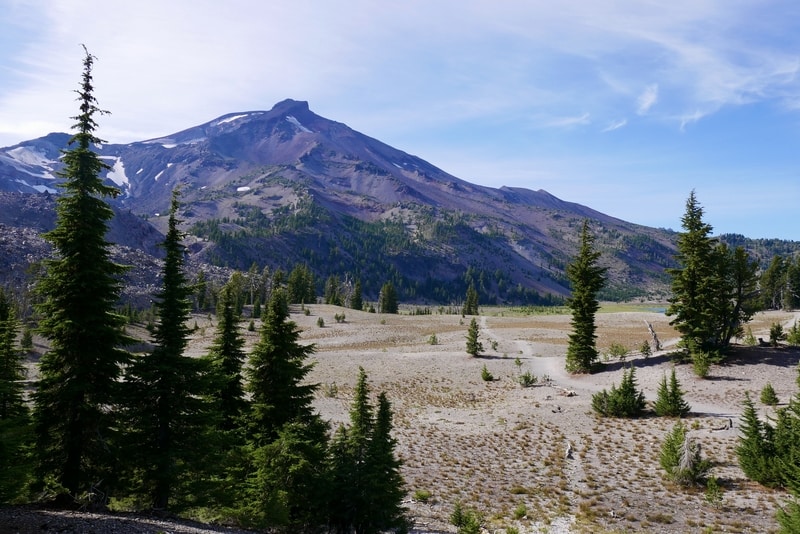
But, for the sake of creating a list of must-see attractions that can assist Bend-bound travelers, here is a roundup of 10 things to do in Central Oregon (in no particular order).
1. ENJOY THE BEST OF BEND: THE HUB OF CENTRAL OREGON
The booming town of Bend is the heart and soul of Central Oregon, and a newly discovered Pacific Northwest gem. It is the area’s regional hub and a launchpad for trips into the surrounding wilderness. The former logging town has a sort of magnetic pull that seems to draw tourists in and entice them to stay.
While growing up, I remember viewing Bend as a dusty desert town with few noteworthy characteristics.
Oh, how times have changed.
Over the last two decades, Bend’s population has nearly quintupled in size. The sun-blessed Oregon town first began attracting retirees in droves for its sunny skies. Then came the hikers, the mountain climbers, and the ski bums.
Now, it is the seventh most populous city in Oregon, and its growth shows no end in sight.
With a population just shy of 100,000 residents, Bend combines big city amenities with small town charm. It has a highly touted culinary scene, a thriving art scene, and more breweries per capita than just about anywhere else in the world.
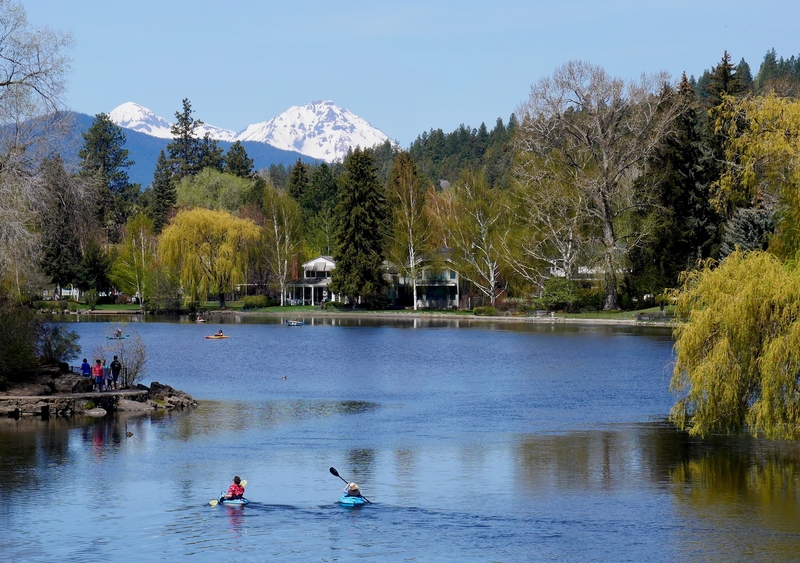
Though the charming Central Oregon town is best known for its plethora of nearby outdoor attractions, there are many fantastic things to do in Bend itself. Top places of interest include Drake Park, Pilot Butte, the Old Mill District, and the High Desert Museum.
2. EXPLORE THE THREE SISTERS WILDERNESS
The town of Sisters looks like the movie set for a western film. Sisters hosts a yearly rodeo that is among the best in the west, and its attractive main street is lined in boutiques that will satisfy those who prefer shopping to nature.
Beyond, a vast forest-blanketed mountain wilderness beckons outdoor enthusiasts with some of the most beautiful views in Central Oregon.
-
BLACK CRATER HIKE
The Black Crater Trail is one of my favorite Central Oregon hikes. The seven mile roundtrip climb offers unparalleled views of the Three Sisters Mountains.
When I hiked the trail a few years ago, I remember reaching the summit and marveling at a layer of volcanic earth that draped over the mountaintop like a ruby shawl. I recall looking out over the landscape punctured by Mount Washington and the Dee Wright Observatory, and thinking the view couldn’t get much better.
Little did I know that turning around 180 degrees would bring me face to face with the North Sister.
When Dan tapped my shoulder and suggested I check out the view behind me, I gasped. The Three Sisters were so close, I felt as though I could reach out and touch them.
-
SOUTH SISTER HIKE
I’ve had the South Sister Hike on my wishlist for as long as I can remember. The 12 mile out and back trail offers experienced hikers the opportunity to climb to the top of Oregon’s third highest peak.
I have not yet attempted the trail, though I hope to reach its summit within the next year. Unfortunately, the short window of time that the trail is open, coupled with the fact that I live in Seattle, makes hiking South Sister a logistical challenge.
3. DRIVE THE OLD MCKENZIE HIGHWAY
The Old McKenzie Highway is one of Oregon’s most scenic drives. The winding route connects the towns of Sisters and McKenzie Bridge.
Along the way, it provides access to countless historic, recreational, and scenic attractions—including fairy tale waterfalls, lunar landscapes, and old growth forest.
Together with portions of Highway 126, it comprises the McKenzie Pass-Santiam Pass Scenic Byway.
-
DEE WRIGHT OBSERVATORY
The Dee Wright Observatory is located in the Cascade Range, atop a barren blanket of lava in the Willamette National Forest. It overlooks a 65-square-mile sea of black lava rock that resembles the lava flows of the Newberry Crater National Monument.
The Dee Wright Observatory dates back to the 1930s, when the Civilian Conservation Corps constructed the structure to showcase the area’s spectacular topography. The shelter’s windows align to capture views Central Oregon’s prominent peaks.
As with the nearby Newberry Crater Monument, the volcanic lunar landscape near the Dee Wright Observatory caught the attention of NASA astronauts planning a mission to the moon.
Of all the lunar landscapes in the United States, they believed Central Oregon’s lava lands best mimicked what they might find on the moon.
4. FOLLOW THE MCKENZIE RIVER ALONG ROUTE 126
Though the Old McKenzie Highway is certainly a detour worth undertaking, Highway 126 has no shortage of gems, either. The state highway connects Sisters with the central Oregon coast. Along its course, it follows the McKenzie River through the Willamette National Forest and conceals plunging waterfalls, turquoise pools, and secluded hot springs.
Highway 126 suffered severe damage during the Holiday Farm Fire of 2020, so please check updated information before planning a trip to the area.
-
TAMOLITCH POOL
The Tamolich Pool is a gem I’ve only recently discovered. The pool lies to the west of the Old McKenzie highway, between Eugene and Bend, on Highway 126. Known alternatively as the ‘Blue Pool’ for its striking color, its glassy surface is almost iridescent in the sunlight. Tamolich Pool’s frigid jewel-like waters scintillate in shades of turquoise, sapphire and emerald.
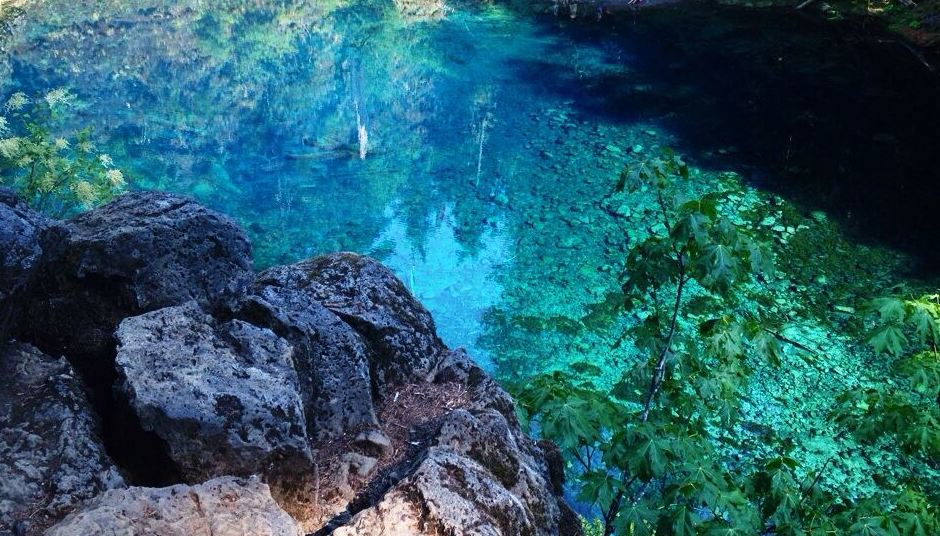
A two mile trail through old growth forest leads to the crystalline pool.
-
BELKNAP AND COUGAR HOT SPRINGS
Hikers courageous enough to take a dip in the icy waters of the Tamolich Pool can reward their bravery with a post-polar-plunge-soak in the soothing thermal waters of the nearby Belknap and Cougar hot springs.
Belknap is a developed mini-resort with hotel rooms and a concrete pool. The nearby Cougar Hot Springs consist of a cascading string of clothing-optional swimming holes that lie along the river, amongst old growth forest.
5. RECREATE ALONG THE CASCADE LAKES HIGHWAY
The Cascade Lakes Highway—designated one of Oregon’s sixteen National Scenic Byways—is dripping in natural splendor. It has jaw-dropping vistas at every bend, and recreational activities galore.
Scenic lakes lie scattered along the highway like topaz jewels on a necklace chain. In the hot summer months, these glistening bodies of water provide ample opportunities to swim, kayak, canoe, and paddle board.
-
SPARKS LAKE
Sparks lake is one of more than a dozen lakes that lie alongside the scenic Cascade Lakes Highway in Central Oregon. A popular place for picnicking, paddle boarding, swimming and kayaking, it lies in the shadow of the South Sister, Broken Top, and Bachelor Butte. The lake’s surroundings reveal a wonderland of wetlands, marshes, and meadows.
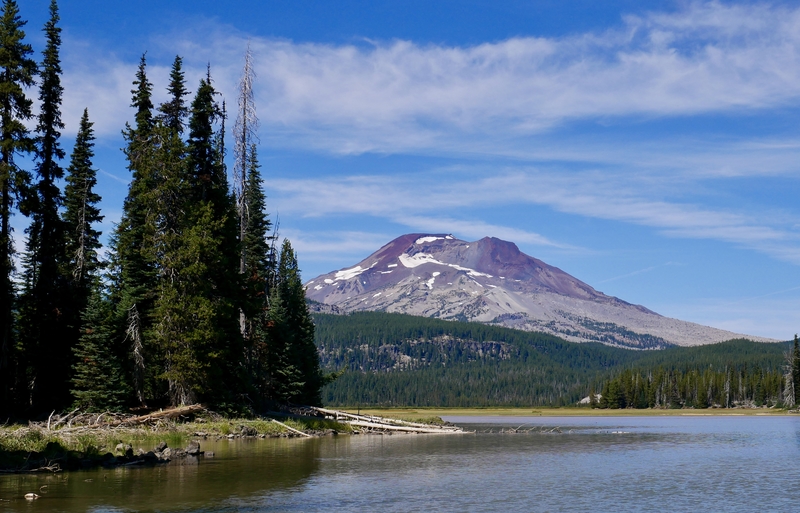
Spark’s Lake is a favorite among landscape photographers. And for good reason. The lake’s spectacular setting in the shadow of Oregon’s most beloved mountain peaks is difficult to outshine.
-
GREEN LAKES HIKE
Green Lakes is a popular Central Oregon Hike that offers stunning views of Broken Top. The hike up to the three lakes is a fairly easy 8 mile climb on a well maintained trail that winds its way through gentle forest. The trail stays close enough to the creek that it comes with an added soundtrack of rushing water. I imagine the area is particularly stunning in Spring and early Summer, when snow still clings to the crags of its surrounding mountain peaks.
The Green Lakes Trail is popular on weekends and can get quite crowded. Luckily, we were able to avoid the crowds by starting our trek in the late afternoon, when most hikers were beginning their descents.
6. SKI AT MOUNT BACHELOR
Skiing Mount Bachelor is one of the top things to do in Central Oregon.
The mountain—aptly named for the fact that it stands slightly removed from the prominent Three Sisters—contains one of the largest single mountain ski resorts in the United States.
In winter months, heavy snowfall closes the Cascade Lakes Scenic Byway for much of the year. But from mid-November through May, the slopes of Mount Bachelor become one of Oregon’s top attractions.
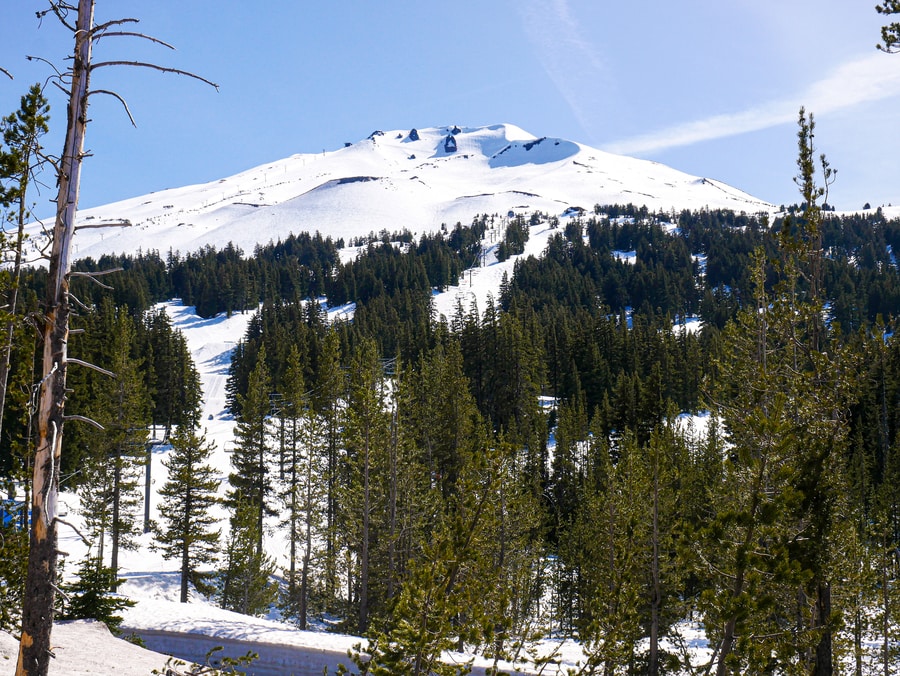
Mount Bachelor is Oregon’s premier ski resort. It has some of the best fresh powder in the Pacific Northwest, and one of the longest ski seasons in the United States.
7. VISIT THE NEWBERRY CRATER OF CENTRAL OREGON
The Newberry Crater Volcanic Monument lies within the boundaries of the Deschutes National Forest, near the town of LaPine. The monument is home to some of the the most fascinating landscapes in the Pacific Northwest, and has been designated a national monument for its geological importance.
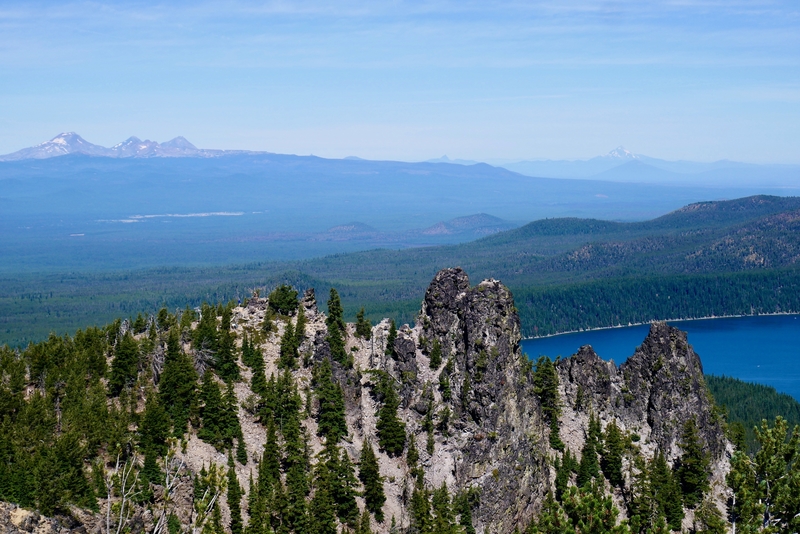
Along with the lava fields on the McKenzie-Santiam Highway, it provides some of Central Oregon’s most breathtaking lunar scenery.
Visiting the national monument requires a $10 fee. The park also accepts the Northwest Forest Pass and Annual National Parks Pass.
-
PAULINA PEAK
Paulina Peak is the tallest point within the Newberry Volcanic Monument. From its summit, the mountain offers spectacular views of the Big Obsidian Flow and the twin sapphire lakes that lie within the Newberry Caldera.
-
THE LAVA RIVER CAVE
The Lava River Cave provides an opportunity to get close and personal with the Newberry Crater’s geology. The cave is located near Lava Butte, just off Oregon’s Highway 97.
Oregon’s Lava River Cave extends for a mile below the surface of the earth. Along its entire length, it passes through chambers that reveal the various stages of the cave’s formation. The entire experience is eerie, dark, and silent.
Due to limited visibility and chilly temperatures underground, flashlights and sweaters are absolutely necessary when visiting the cave.
8. HIKE OR CLIMB AT SMITH ROCK STATE PARK
Smith Rock State park is one of the most beloved landscapes in Central Oregon. Located just outside Terrebonne and only half an hour from Bend, it has become a backyard escape for many of the area’s residents,
But Smith Rock isn’t just a local favorite. In fact, this natural jungle gym draws rock climbing enthusiasts from all corners of the globe. It is the birthplace of rock climbing as a sport, and one of the Central Oregon’s primary attractions.
The towering rock faces of Smith Rock boast more than 1,000 bolted climbing routes, and miles upon miles of hiking trails.

Smith Rock State Park has been designated one of the seven wonders of Oregon. The area’s unique topography is a result of the Crooked River carving through basalt rock over millennia.
Suggested hikes in the area include Misery Ridge Trail, the Canyon to Rim Loop, and Summit Loop Trail.
9. STARGAZE
Central Oregon has some of the best stars I’ve ever seen, thanks to the area’s cloudless desert skies and relatively low levels of light pollution.
I distinctly remember looking up at the night sky in Central Oregon as a child and being wowed by its luminous canopy of stars. From Summer Lake, to Smith Rock, to the barren deserts of the John Day Fossil Beds National Monument, the area’s top stargazing locations do not disappoint.
-
CENTRAL OREGON OBSERVATORIES
While Central Oregon’s night sky can be easily enjoyed with the naked eye, the University of Oregon Pine Mountain Observatory lies only forty minutes east of Bend, in the scrub-covered vastness of Oregon’s high desert. It sits atop a 6,000 ft mountain, making it an ideal place to enjoy the milky way.
The observatory is operated by the University of Oregon’s Physics Department. While research is its primary function, it also acts as an educational resource for Bendites and curious visitors. The observatory is open to the public on Friday and Saturday nights, from Memorial Day weekend through the last weekend in September. Though the observatory does not collect entrance fees, its website suggests contributing $5 donations.
In addition to the Pine Mountain Observatory, milky-way-seekers can enjoy celestial views from the telescopes of the Sunriver Nature Center.
Those who can’t decide if they’d rather stargaze or hit the breweries, can enjoy starry skies from an observatory tower at Worthy Brewing in Bend’s eastern neighborhood.
10. VISIT THE JOHN DAY FOSSIL BEDS NATIONAL MONUMENT
The John Day Fossil Beds teeter on the edge of Central Oregon. In fact, most people probably wouldn’t even consider incorporating them into their Central Oregon itineraries, since they lie so far to the east. I’ll include them in this list, however, since they’re still technically in the central third of the state.
Located less than two hours from Bend near the town of Mitchell, the monument is in the middle of nowhere, and yet easily accessible.
For travelers to the area, it would be a shame to skip them.
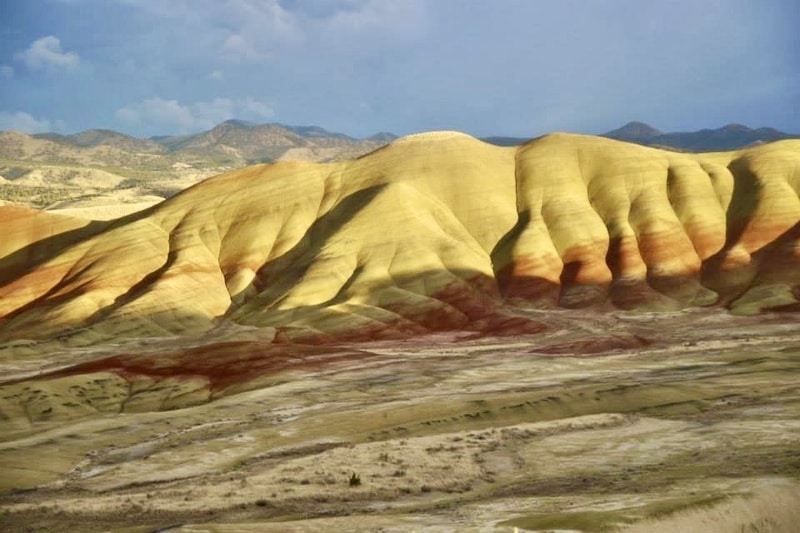
The John Day Fossil Beds National Monument consists of three main units: the Painted Hills, Clarno, and Sheep Rock. The Painted Hills are, by far, the most well-known section of the park among tourists.
-
THE PAINTED HILLS
Distinguished by their colorful horizontal stripes, the Painted Hills are the undeniable highlight of the John Day Fossil Beds National Monument.
Aesthetically, the area looks as though it were decorated at the hands of an artist. Its undulating landscape—most vibrant in the late afternoon hours—is covered in colorful strokes of tan, orange, crimson, and pink.
Geologically, the area is significant, too. The Painted Hills Unit contains a diverse assemblage of leaf and animal fossils that date back more than 30 million years.
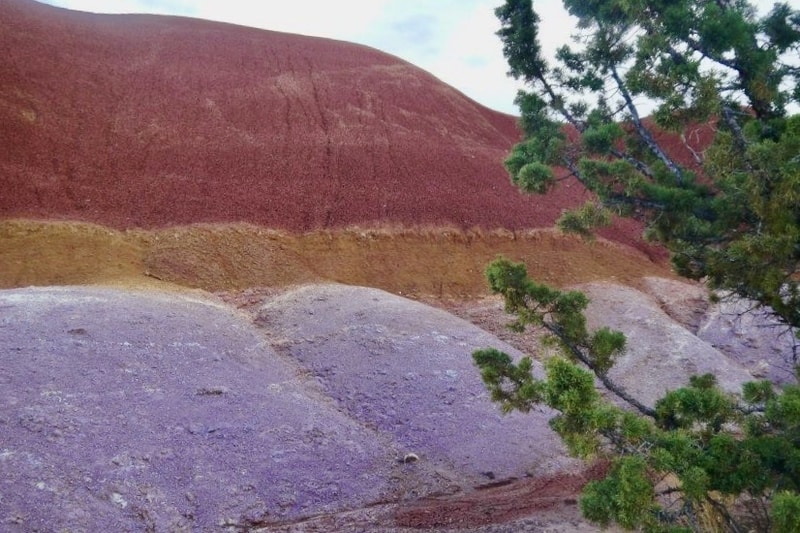
A handful of short trails wind their way through and along the Painted Hills, each offering a different perspectives of the monument’s scenery.
-
SHEEP ROCK AND CLARNO
In addition to the beloved Painted Hills, the John Day Fossil Beds National Monument boasts worthwhile attractions at its Sheep Rock and Clarno units. Sheep Rock contains an amalgam of colorful greenish strata and is home to the Blue Basin Overlook Trail. Little-visited Clarno consists of grassy hillsides interrupted by eroded cliffs. These rocky cliffsides contain a large number of fossils.
11. DRIVE THE OREGON OUTBACK
As Oregon Route 31 splits from the Dalles-California Highway south of La Pine, the ponderosa forests of Central Oregon give way to to plains of juniper and sagebrush. Craggy snowcapped peaks transform into shallow hillsides. Towns become fewer and farther between. This seemingly barren wasteland is the Oregon Outback—a cowboy country littered with a sparse smattering of ranches and single-intersection towns.
-
FORT ROCK STATE PARK
Fort Rock is one of the main stops along the Oregon Outback Scenic Byway. The natural landmark rises from the barren immensity of Oregon’s high desert.
Fort Rock is the largest tuff ring in Oregon’s volcanic region. Its enormous amphitheater of towering rock walls is deceptively tall.
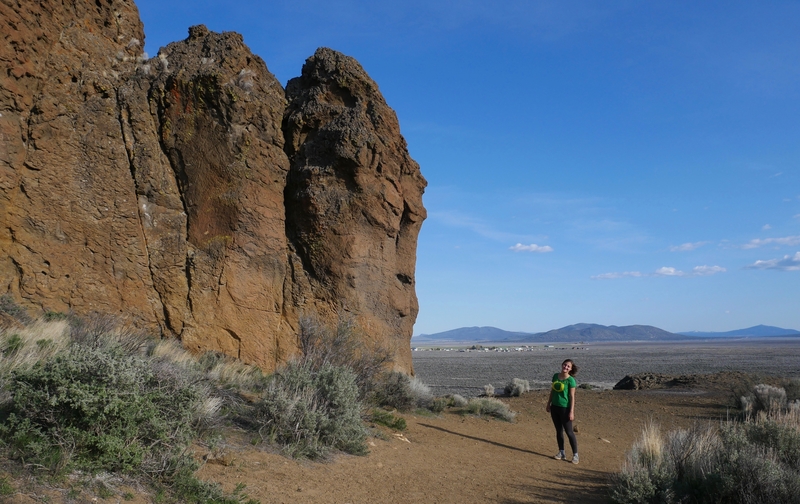
In 1931, archeologists discovered a pair of 13,000 year old sandals in one of Fort Rock’s caves. The sandals remain the oldest shoes ever discovered.
Today, they reside in Eugene’s Museum of Natural and Cultural History.
-
SUMMER LAKE HOT SPRINGS
The Summer Lake Hot Springs lie at the southern end of Summer Lake, between the Fremont National Forest and the Hart Mountain Antelope Refuge. The hidden gem is an oasis sanctuary that boasts a 100 year old bathhouse and three rock-walled soaking pools.
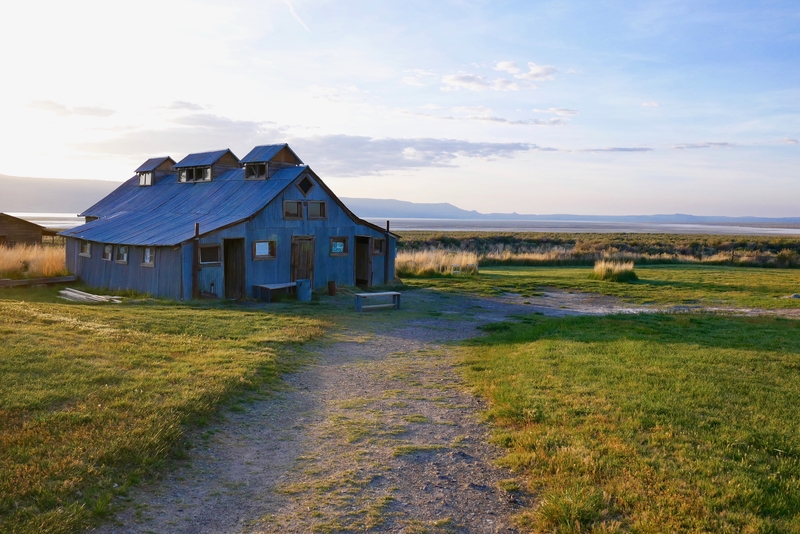
Summer Lake is the perfect place to (literally) soak in the sweeping beauty of Oregon’s desolate Lake County.
12. CYCLE ONE OF CENTRAL OREGON’S SCENIC BIKEWAYS
In addition to being a haven for skiers, kayakers, and rock climbers, Central Oregon is a cyclist’s mecca. The region is home to four of Oregon’s 17 scenic bikeways.
As one of the most bike-friendly states, Oregon pioneered a scenic bikeway program that would give cyclists access to some of the state’s most scenic areas. These bikeways range in difficulty and length, from 30-mile rides to multi-day adventures totaling almost 200 miles.
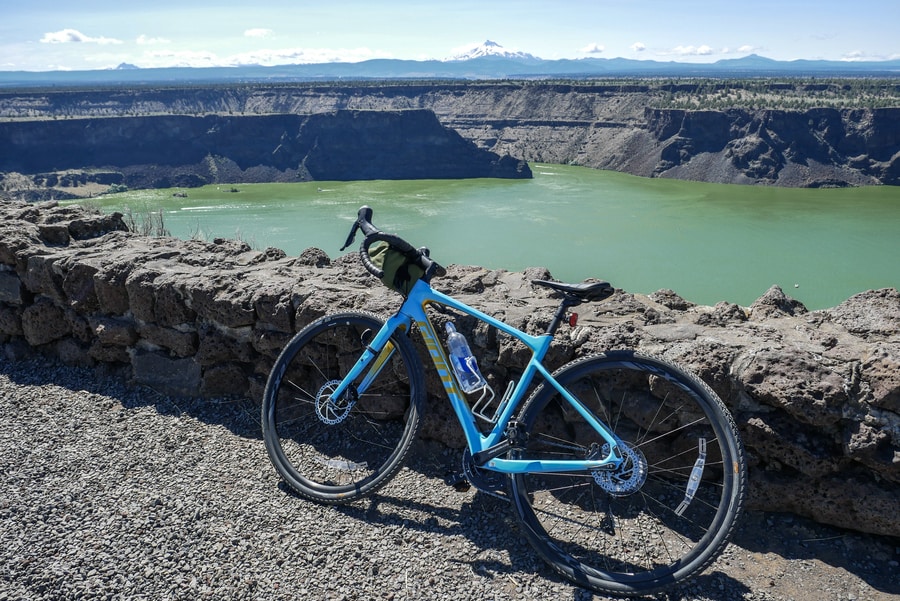
In Central Oregon, the Twin Bridges Scenic Bikeway and the Madras Mountain Views Scenic Bikeway are two of the region’s most scenic bike routes.
BEST TIME TO VISIT CENTRAL OREGON
Central Oregon is a year-round travel destination. In summer, the region’s unparalleled outdoor opportunities attract rock climbers, cyclists, and hikers from around the globe. In winter, its snowcapped peaks ensure that lovers of winter sports have plenty to look forward to during colder months.
That being said, the months between June and October are best for discovering Central Oregon as a whole.
During winter months, many of the snow-dusted Cascade Mountain attractions remain off-limits due to road closures.
PLACES TO STAY IN CENTRAL OREGON
Central Oregon has something for everyone when it comes to accommodation options. While camping is my favorite way of exploring the region due to Central Oregon’s abundance of recreational activities (the Bivouac Campground at Smith Rock is exceptional), the area has no shortage of boutique hotels and luxury resorts.
For non-camping travelers looking for basic budget accommodation in Bend, the Bunk+Brew Hostel offers cheap shared lodging. The bunkhouse comes complete with a sauna room, a beer/food garden, and free check-in beers on arrival.
For those seeking private accommodation with more amenities, The Camp offers a retreat that is both comfortable and unique. The RV resort is a hybrid version of chic meets outdoorsy, with vintage trailers for rent, like the ParkRanger and the Clifford.
For luxury vacationers seeking a mountain retreat near Bend, the Tetherow Resort offers luxurious rooms overlooking one of the nation’s top golf courses.
****
Travelers interested in the outdoors are hard-pressed to run out of things to do in Central Oregon. The area’s convergence of high desert and alpine wilderness makes for a truly special environment. It contains the state’s most beloved features (seashore aside) wrapped into one. Not many other places in the world have such a staggering array of lakes, rivers, mountains, forests, deserts, waterfalls, craters, and lava flows.
And not only is the area a wonderland with infinite possibilities for exploration, but it is also launching pad for road trips farther afield. Within a few hours’ drive, one can head north toward the Columbia River Gorge, east to the Wallowas and Alvord, south to Crater Lake, and west to the Oregon Coast and fertile Willamette Valley.
Each time I visit Central Oregon, I realize I have more places to add to my collection of favorites. Each time I discover these new places, I leave a larger piece of my heart amid the soaring mountains and vast desert vistas. And each time, within minutes of leaving the region, I begin scheming of ways to return.
___________________________________
Like this Central Oregon Travel Guide? Pin It!
